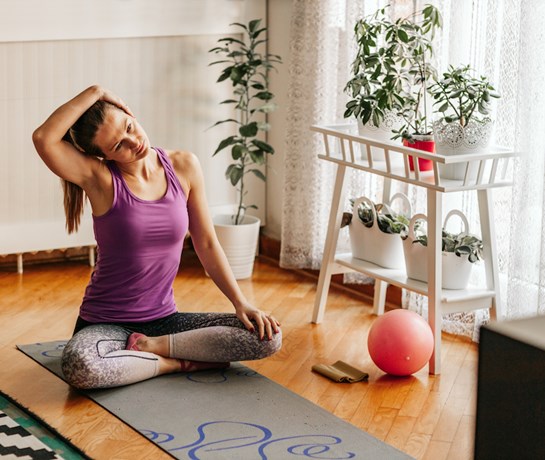

You may be familiar with the concept of mindfulness, the practice of being in the moment, fully aware of what’s going on in your mind and body as it’s happening. And it is a practice—you can learn to reach a state of mindfulness through simple methods and exercises that will allow you to regularly reach a mindful state in your everyday life.
The Benefits of Mindfulness
Mindfulness is incredibly valuable for your personal well-being as well as your work. Many people may think mindfulness is a difficult goal to reach, but if you allow yourself time to practice it you may be surprised at how effortless it actually is.
Mindfulness is the process of being aware of the world and allowing whatever arises to be as it is. You must be present, without judgment, without formulating a plan to change anything. You have to be comfortable relinquishing control and letting go of expectations. When we intentionally become aware of an ongoing experience, purposefully pay attention to what we are doing, and realize who and what is around us in that moment, we are on the path to being mindful.
One of the many benefits of mindfulness is greater resilience to stress. You can hone areas of the brain that regulate emotional responses and develop new, healthier ways to managing stress or anxiety. Mindfulness can also help us develop greater kindness and compassion for ourselves and for others, and it can help us face challenges. By facing new challenges in an open way, we learn from our experiences rather than trying to avoid or control them. These are some of the core fundamentals of mindfulness, which can bring immediate benefits when fully integrated into your life.
Mindfulness Examples, Meditation Techniques, and At-Home Exercises
Mindfulness is something you should do on a regular basis. Part of the beauty of mindfulness is that it becomes second nature when practiced regularly. Like any habit, it becomes a part of your normal response to certain scenarios. Meditation, belly breathing, or even using a daily wellness app can become integral parts of your mindfulness routine.
Driving is a good example of how we must actively choose to be mindful. When you first started learning to drive you probably focused intently on holding the steering wheel the right way, not stomping the gas pedal, and checking your mirrors. But over time driving becomes second nature—we’re paying attention, but we’re not fully focused. The more we live in that distracted kind of way, the less present we are with ourselves and with others. It’s easy to forget about the task at hand and get lost fantasizing about the future or dwelling on the past. But focusing your mind on remaining present can have a profound effect on our mental health and physical well-being.
Here's a short mindfulness exercise you can do right now. Get comfortable and think about how you’re feeling right now. Take a moment to listen to your body. Look around and notice where you are. Pay attention to objects and their significance. Look at the other people you’re sharing space with. What do you notice now that you’re giving your surroundings your full attention? So much of our life is a blur, rushing from activity to activity. It’s vitally important to pause, take a deep breath, and enjoy the moments we are existing in right now.
Diaphragmatic Breathing
You can practice mindfulness with diaphragmatic breathing, also known as belly breathing. Have you ever told a friend who’s panicking to “take a deep breath?” or told yourself “just breathe” in a stressful situation? These are common ways of encouraging diaphragmatic breathing and can go a long way towards balancing one’s emotions and centering one’s thoughts onto the present. When we consciously focus on our breathing we can reset the stress response that overtakes us.
The diaphragm is the muscle located just below your rib cage that draws and pushes air in and out of your lungs. Diaphragmatic breathing encourages much deeper breaths, and many find it soothes anxiety and feelings of stress. It’s been scientifically proven to reduce cortisol levels in your body and lower blood pressure.
Here's a step-by-step guide on learning how to belly breathe in just a few minutes:
- Make sure you’re sitting comfortably.
- Place one hand on your upper chest and the other just below your ribcage, right where the diaphragm is.
- Pay attention to your breathing, as you take some normal breaths in and out. Notice what hand is moving, or maybe both your hands are moving. Which one might be moving a little more? Where does your breath tend to rise and fall naturally?
- See if you can shift or alter your breathing so you’re drawing more breath down into your abdomen (and your diaphragm) rather than into your chest.
- Inhale deeply through your nose, allowing your belly to or abdomen to expand and rise. As you take a deep breath in noticing that hand on the chest and how you're trying to keep it as still as possible.
Don’t worry if you have some trouble changing your breathing pattern, as it can take some time to learn. If you’re finding it difficult, try this—inhale deeply through your nose, and almost visualize sending that air right down into your abdomen. As you exhale, purse your lips a bit and blow out, almost as if you're blowing a balloon. Tighten those abdominal muscles so you're really trying to squeeze that air out of the abdomen. This can help you gain control of your diaphragm and encourage deeper belly breaths.
Workpartners Can Help Transform Your Workplace
Workpartners has helped workplaces of all sizes and in all industries make the most of their employees’ physical and emotional health. Our integrated data solutions bring all your company’s health data together and can help uncover hidden costs to your business. Once you have a clear picture of your employee population, it’s time to activate them! By implementing our LifeSolutions EAP, you can unlock the health and productivity benefits of mindfulness and meditation within your workforce!
There are several guided meditations and mindfulness exercises that are available to you and your employees through our LifeSolutions portal, which may be used at your own pace. You can learn more about LifeSolutions on our website. Click “Login,” enter your company code, and click on “Mindfulness” on the homepage for more information.
To turn your workplace into a well-place with our Employee Assistance Program services, get in contact today, or give us a call at 1-866-229-3507.
About the Webinar
For more insights, watch our webinar on an Introduction to Mindfulness
To find out where we are and what we’re up to, check out our newest Workpartners Webinars!





